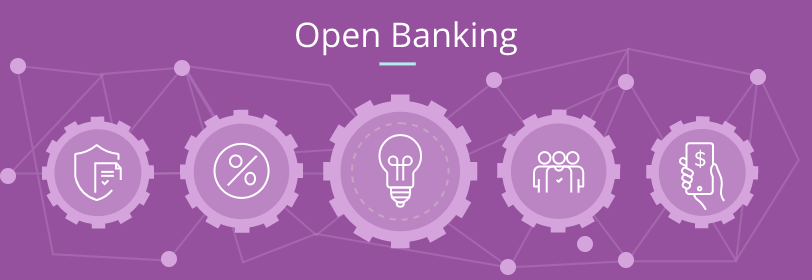
By allowing banks to leverage third party applications to expand their product portfolios, open banking opens the doors to limitless innovation. Traditionally, customer data always remained with the bank. Open banking represents a fundamental shift in this paradigm as it puts customers in charge of their own data. They are free to share their data including transaction details with third parties, which helps different third-party organizations to come up with personalized, intuitive, and cost-effective offerings. This will lead to the adoption of banking-as-a- service and open limitless possibilities for differentiated and customized offerings across numerous touch points. Understandably, interest in open banking models is high. In 2020, 29 percent of CXOs said that open banking was their choice of innovation strategy for the future.145 percent said it was a part of their larger digital ecosystem vision. As open banking picks up pace, organizations have to figure out the best pricing strategies for this new economy.

New Pricing Models for a New Era of Banking
Older pricing models will not work in the open banking system. And balancing business objectives with the need for API consumers to experiment and grow can be challenging. A good pricing strategy must offer the best return on investment while ensuring value for third parties involved. This calls for a dynamic approach to pricing with a scope for learning, adapting, and growing. Value based pricing models are best suited for the open banking ecosystem because it is based on the providers understanding of the value delivered by the user and their capacity to pay.

Pricing for Multiple API User Segments
Banks must begin by segmenting API users based on factors such as their need, value generated from the API and their cost appetite. They must also consider the larger market context when determining pricing. A different approach in an established market may confuse third party providers and result in reduced adoption. The pricing model must be designed to deliver business value for each segment of third-party consumers. Each segment has different value drivers that the provider must understand to set differentiated pricing models.
Users can be categorized into four broad segments.

The first comprises independent developers, start-ups and fintechs who require data and business functionalities to create their own products. They want to build and refine the product before it can generate revenue and so they need the flexibility to consider different options without paying for them at the beginning. Once the product is finalized, they usually pass on the transaction cost to the customer. In this instance, the pricing strategy must support them as they begin their product development journey and enable payments against usage only once they start acquiring customers. In India digital wallet and e-commerce platform PayTM has created a dual pricing model for its APIs. One is a starter pack that does not charge users and the other is an advanced option for large users which includes a full payment suite based on a pre-defined percentage of transaction value.

The second segment comprises payment aggregators. These players are often involved in the product distribution strategy for the API provider by helping sign up more payment partners and merchants. They can widen the reach of the APIs to other businesses that are ready to pay for the integration. They may also add value-added services to bring in more third parties. In this case, revenue sharing models would benefit both the aggregator and the provider.

There are also organizations that want to use APIs to improve operational efficiencies and reduce the cost and risks associated with diverse transactions, validations, and reconciliations. This third segment of users are willing to pay for usage right from the beginning. They often generate high business volume, and it would make sense to deploy a volume-based pricing strategy for them.

Small scale businesses, utility providers and retailers who use APIs to improve access to their products and services comprise the last category. The pricing strategy for them needs to be completely different from the other three as they don’t generate very high business volumes.

Pricing based on API Objectives
The pricing strategy for each API should support the overall objective for which it was created. For example, a merchant payment API is created to widen the reach of a bank’s payment network so that the customer can use it often like a mobile wallet. The pricing should then be aligned with the objective of increasing market share and transaction volume rather than revenue increase. On the other hand, one that deals with customer data is created to monetize the asset and should be priced directly for the API call. Sometimes third parties can create a service or product that conflict with the bank’s core offerings; or a bank’s API can drive a customer shift from traditional to newer products causing a shift in revenues across business lines. In such instances, the bank must carefully consider the immediate and long-term implications of the situation and decide on pricing based on their strategic business needs.
Technology-Driven Pricing
Pricing for the open banking economy needs an agile scalable pricing platform that can cater to sectoral and global markets simultaneously. It must be capable of handling dynamic pricing models based on data from the APIs. And it should be able to integrate easily with multiple third-party systems when using the APIs. Right now, banks are investing in developing APIs for the open banking system. They must also consider and allocate budgets for deploying an advanced pricing platform that can monetize the value delivered by the APIs and ensure a seamless and efficient pricing model.
Open banking is the future of an industry facing unprecedented disruption. It holds the opportunity for traditional banks to rediscover their strengths and explore new revenue models. Banks or API providers embarking on this journey must remember their success is inextricably integrated with that of the third-party API consumers. Pricing models that ensure mutual benefit and multilateral value are the only way to successfully navigate the open banking economy.
Sources:
Binesh K
Binesh holds a management degree from IIM-L and has worked in Management Consulting, EdTech & Insurance sectors